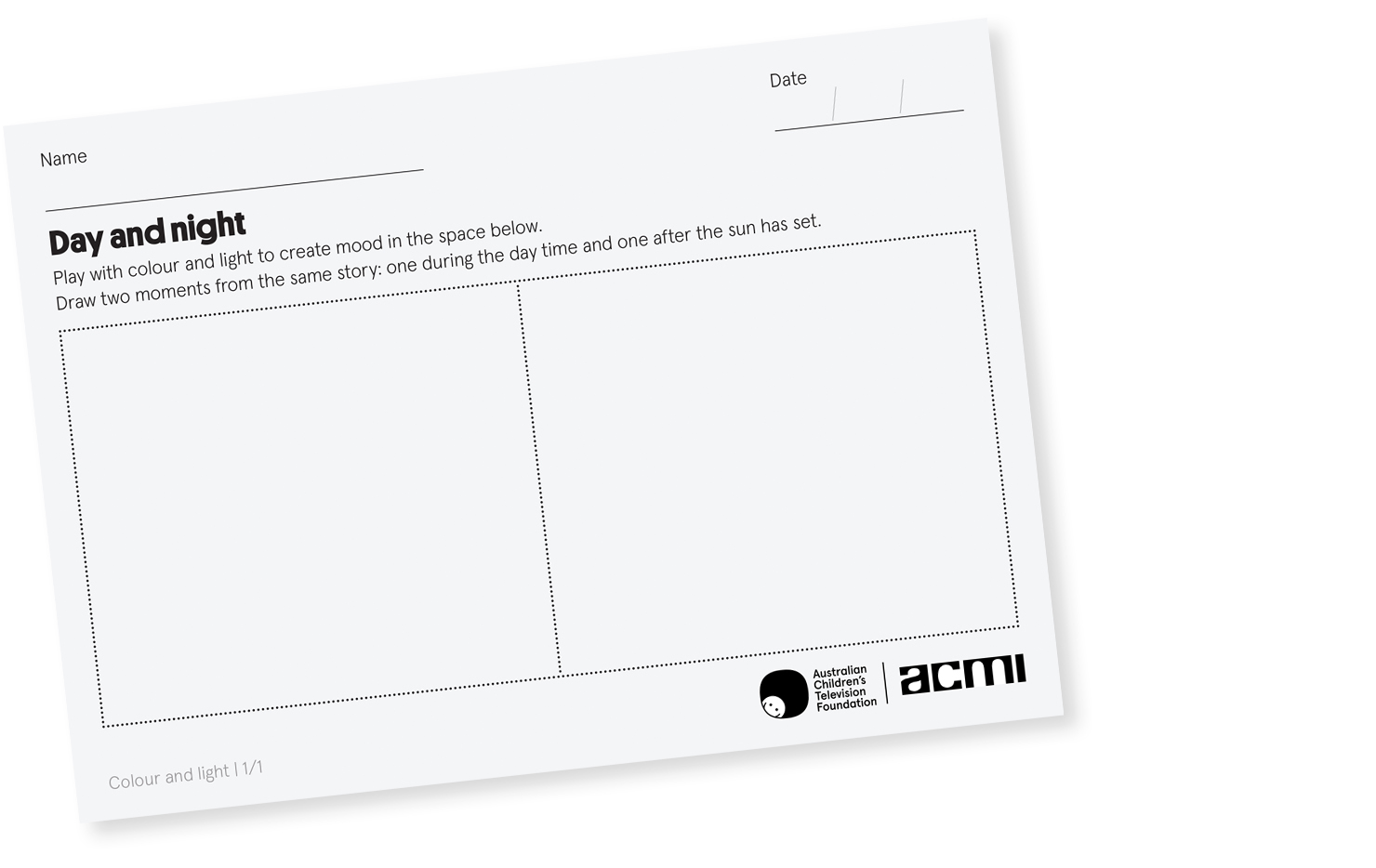Suitable for years F-2
How is colour used to build the story? How does light create mood? How do animators use colour and light together to create rich screen content we want to watch?
The use of lighting and colour in television has the power to influence the audience’s mood. In this virtual workshop, early years students are introduced to the use of light and colour in Australian Children’s Television Foundation content to learn about how these elements impact the mood of the story.
Teacher notes
Suitable for Foundation to Year 2, this learning resource provides activities to support learning about how colour and light is used to visually build a story and influence the audience mood when we watch or create ideas in animation. It includes both warm up and follow up activities that stimulate and extend the ideas presented during the 25-minute virtual workshop recording.
Australian Curriculum links:
- Foundation English, Visual and Media Arts:(AC9EFLA04), AC9EFLA07), AC9EFLE02), (AC9AMAFE01)
- Year 1 English, Visual and Media Arts:(AC9E1LA08), (AC9E1LE01), (AC9E1LE02), (AC9E1LY02), (AC9E1LY05), (AC9AMA2E01), (AC9AMA2E02)
- Year 2 English, Visual and Media Arts:(AC9E2LA08), (AC9E2LE01), (AC9E2LY02), (AC9E2LY05), (AC9AMA2E02)
Begin with some thinking tasks to document students existing knowledge on the topic of light and colour.
Activity
As a class, map all the ideas that come to mind when you hear the words ‘colour’ and ‘light’. When brainstorming these ideas, make sure you also share the types of light you can think of and colour names that come to mind.
Using the definitions and ideas students have shared, ask: questions that encourage comparison.
- What are the ways colour and light are the same?
- How are colour and light different?
Create a Venn diagram, mind map or table to aid the visualisation of this information.
Now that we have done some thinking around colour and light, let’s apply these to the world of animation.
Activity
Revisit the definitions and comparison of colour and light, this time thinking about how these might make us feel in an animated story.
Prior to watching the virtual workshop, these questions can be used as a warm-up to get students focused into the topic.
- If the animated story is set on a bright sunny summer’s day, how would you feel?
- When a dark shadow is cast over a characters face, what type of mood is created?
- What might the warm colours (reds, oranges and yellows) mean in an animated story?
- Can you think of how magic could be added to a story using colour and light?
Watch the 23-minute virtual session to see some examples of the ways light and colour influence mood in animated screen stories.
Extend the ideas introduced in the virtual session with class activities to reinforce how colour and light have the power to influence mood.
Day and night story
Ask students to create a story using illustrations. Students can focus on how light and colour is used to create mood. Distribute the printable worksheet for students to plan two moments in the same story; one during the day and one at night.
Students start with a drawing or black and white printed photograph of themselves, showing an emotion of their choice through facial expression and body language. They can then manipulate colour and light as layers over and around the portrait to highlight the mood they are aiming to express. Ask students to share their work with their peers and seek feedback on how successfully they created the intended mood.
Invite students to engage in developmental play time with resources that involve colour and light. In a darkened room supply small torches and coloured cellophane to activate play scenes for students in self-led learning that have the power to influence mood.
Share your work with us
We welcome feedback from teachers who have delivered and adapted our resources. Please reach out to education@actf.com.au with questions, comments, and suggestions.
This resource is co-developed by the ACTF and ACMI.
This learning resource is supported by the Strategic Partnerships Program through the Department of Education and Training.



